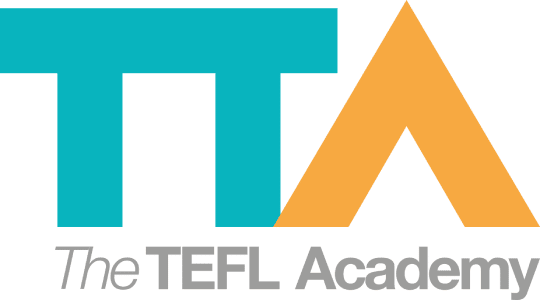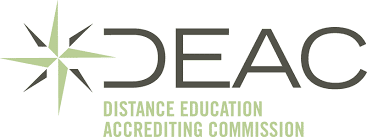An A – Z Of The English Language
Join a global community of over 200,000 TEFL teachers working throughout the world! Enrol me!
Not to be confused with The A-Z of English Language Teaching by Scott Thornbury, we thought we’d put together an A – Z of the English language. If you’ve done a TEFL course you probably know most of what you need to know about teaching English as a Foreign Language but there’s always room for a bit of improvement when it comes to grammar, isn’t there?
Check out our A – Z of the English language to see just how much you actually know about English.
A is for Agreement
Agreement refers to the correspondence between a verb and its subject in person in number. It is the difference between I are happy (X) and They was going to the shops (X), and I am happy (✓) and They were going to the shops (✓).
Read more: Effective Error Correction
B is for Binomial
Binomials are phrases which consist of pairs of words which are joined by and or or. The order of the words is usually fixed and knowledge of these binomial expressions will help learners sound more natural. Examples are by and large, sick and tired, and more or less.
Read more: What are Binomial Expressions and How Can I Teach Them?
C is for Collocation
Collocations are words which are commonly found together in English. There are various different collocations, such as adjective-noun, adverb-adjective, noun-noun, noun-verb, verb-noun, verb-prepositional phrase, and verb-adverb collocations. There are no rules governing collocations so students need to be exposed to them as much as possible in order to learn them. Examples of collocations are deep sleep, heavy snow, strong coffee.
Read more: How to Teach Collocations
D is for Determiner
Determiners are words that introduce nouns. In English they always come before the noun, and before any adjectives that come before the noun. The most common determiners in English are the definite article the and the indefinite articles a and an. Demonstrative pronouns, quantifiers and possessives are also determiners.
E is for Ellipsis
Ellipsis is when you leave out a word or words from a sentence because they would be repeated. For example: I’m studying English, [I’m] not [studying] French. Ellipsis also refers to the three little dots (…) used in writing to show that something has been left out or to designate a pause.

F is for False Friends
False friends are two words in different languages which look the same but have different meaning. Because they have similar spelling and/or pronunciation, language learners often mistakenly believe them to be related. For example, in Spanish, the word for pregnant is embarazada. This could lead a Spanish learner of English to claim they are embarrassed when they are, in fact, pregnant, or – perhaps more problematic – an English learner of Spanish to claim they are pregnant, when in fact they mean embarrassed.
G is for Gerund
A gerund is a verb form which functions as a noun. In English this verb form takes the –ing, such as in the sentence Smoking is prohibited.
H is for Homonym
There are two types of homonyms: homographs and homophones. Homophones are two words that have different spelling and meanings but the same pronunciation; for example, She read that book yesterday and The book is red. Homographs are two words which have the same spelling but different meanings and pronunciation; for example, Lead the way and The rod was made out of lead. Yes, it’s confusing, but it’s easier to get your head around it when you remember that phone means sound and graph means written.
I is for Inversion
Inversion is when we put the verb in front of the subject. This happens in questions. However, we can also use it with a negative adverb or adverb phrase as a literary device to add emphasis. For example, we can change the sentence I had never seen such a beautiful dress! to Never had I seen such a beautiful dress!. Common adverbs and adverb phrases we use inversion with are hardly, seldom, not only…but, no sooner, and only later.
J is for Jargon
Jargon is the term we use for words which are very specialized. When people in a certain profession use jargon it is difficult for people not familiar with the field to understand. You have probably come across legal jargon if you have read a contract, or medical jargon if you’re a fan of Grey’s Anatomy.
K is for Kollective Noun
Okay, so it’s actually collective noun but we struggled with k. Anyway, a collective noun is a noun which is used to describe a group of nouns – people, animals or things. Common collective nouns are a swarm of bees, a crowd of people and a choir of singers. More interesting collective nouns are a loveliness of ladybirds, an embarrassment of parents and a crash of rhinoceroses.
L is for Lexicon
A lexicon is all the vocabulary of a person or language. A dictionary, then, is a list of the lexicon of a language.
M is for Modal Verbs
Modal verbs are types of verbs that are used to show modality – likelihood, possibility, ability, permission, obligation and advice. Examples of modal verbs are can, should, must, have to and might.
N is for Nouns
Nouns are possibly the most known word category. Nouns are words used to denote objects or things. There are many different types of nouns, such as common nouns, proper nouns, abstract nouns, concrete nouns and countable and uncountable nouns.
O is for Onomatopoeia
Onomatopoeia are words which are the sound they make – for example splash, cuckoo, gurgle and bang.
P is for Phrasal verb
Phrasal verbs are verbs which are made up of a verb and one or two particles. Sometimes the parts of the phrasal verb can be separated but other times they can’t. Phrasal verbs are usually figurative in meaning ie I look up to my father means I respect my father rather than I am literally looking up at my father who is standing on the roof. Phrasal verbs can be quite problematic for English language learners to grasp.
Read more: How to Teach Phrasal Verbs
Q is for Quantifier
Quantifiers are words which express the size of a noun, for example, many, much, a few.
R is for Reported speech
Reported speech is also known as indirect speech. We use reported speech when we want to tell someone what someone else said. In other words, we want to report the words of someone else. In reported speech we often need to change the tense of the direct speech, but if the words are still true the same tense can be used. We can use the usual said or told me to introduce reported speech but for more advanced levels we can teach our students to use reporting verbs such as argue, complain, deny, admit and promise.
S is for Superlative
We all know adjectives are words which describe nouns. When we need to compare two or more nouns we use comparative and superlative adjectives. Comparative adjectives end in –er or use more – for example, cheaper or more beautiful – and are used to compare two nouns. Superlative adjectives end in –est or use the most – for example cheapest, the most beautiful – and are used to compare three or more adjectives.
T is for Transitive verb
Transitive verbs are verbs which need an object. This is in contrast to intransitive verbs which do not need an object. For example, the verb bring cannot be used in a correct sentence without an object. The sentence Please bring to me does not make sense, while the sentence Please bring it to me does.
U is for Uncountable nouns
Nouns can be countable and uncountable. Countable nouns are nouns which can literally be counted, such as people or pens. Uncountable nouns, on the other hand, cannot be counted easily, such as water and sand. Uncountable nouns are often abstract nouns or substances. With uncountable nouns we use the quantifiers much, a little, little, a lot of and lots of.
V is for Vowel sounds
The English language has 44 sounds. Of those, in British English, 19 are vowel sounds. These are not to be confused with the vowels a, e, i, o and u. Vowel sounds can be long or short or dipthongs, which are two short vowels combined. To find out more about vowel sounds (and consonant sounds) have a look at the International Phonetic Alphabet.
W is for Word stress
Stress in English can refer to sentence stress and word stress. In English word stress can be used to denote different word categories. For example, the word import can be either a verb or a noun, depending on where the word stress is – IMport is a noun, while imPORT is a verb.
X is for auXiliary verb
Auxiliary verbs are helping words. In English, do, be and have are auxiliary verbs. Auxiliary verbs are used to show tense.
Y is for whY
…as in, why aren’t there any grammatical terms that start with Y?
Z is for Zero conditional
Conditional sentences are very common in English. Conditional sentences are sentences which express a condition and a result; they often make use of the word if. There are, in fact, five types of conditionals in English – the zero, first, second, third and mixed conditionals. Zero conditionals are used to express facts and statements which are always true. Zero conditionals utilize the present simple tense in both the conditional and the result clause; for example, If you boil water to 100 degrees, it boils.
And there you have it – an A – Z of the English language. Did you know all of them? Which of them do you still need to brush up on? Let us know!
Accreditation & Quality Assurance
The TEFL Academy was the world’s first TEFL course provider to receive official recognition from government regulated awarding bodies in both the USA and UK. This means when you graduate you’ll hold a globally recognised Level 3 (120hr) Certificate or Level 5 (168hr) Diploma, meaning you can find work anywhere and apply for jobs immediately.
 United Kingdom
UK
United Kingdom
UK












